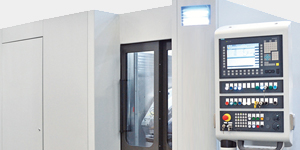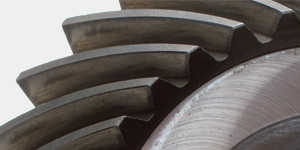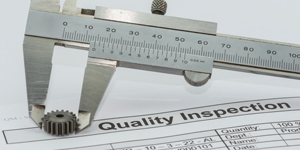Vibratory media composition vs. attrition and density
The third in our multi-part series on vibratory processing of gears is focused on understanding how media of different compositions have varying attrition rates...
Selecting media for optimum vibe bowl gear finishing
The second in our multi-part series on vibratory processing of gears is focused on the selection of media that will be used to improve...
How to set up a vibratory bowl for gear finishing
This is the first in a multi-part series on vibratory processing of gears. This article is focused on machine set-up for optimal mass motion.
Overview...
Magnetic particle testing and evaluation of AMS AQ test samples
Aircraft quality (AQ) testing of steels per AMS 2300, 2301, 2303, and 2304 requires specialized sampling and specimen preparation prior to final evaluation using...
Clever sampling techniques highlight AMS aircraft quality testing
In this edition of Materials Matter, we review the sampling and test piece production required for the AMS aircraft quality (AQ) testing methods specified...
AQ (aircraft quality) testing requirements
Much has been written about the critical nature of steel cleanliness as it relates to the performance of highly stressed, cyclically loaded gear components....
Industry standards for steel cleanness
The correlation of steel cleanness to the performance of parts made from steel has been recognized by engineers for many years. This has been...
Surface finishing rotorcraft gearing
Rotorcraft gearboxes are designed with the utmost precision to withstand the tremendous demand and loads required to convert thousands of horsepower and RPM into...
The state of the art of wind turbine gearboxes
Much has been written here about the global growth in the wind turbine industry. Today, more than 341,320 wind turbines are operating worldwide. In...
Future of gear design relies on overcoming present
Increasing application demands and the need for higher performance mean the future is coming fast for gear designs. The next generation of gear engineers...
Forging the next generation in gear quality
Forging and casting are commonly used processes in gear manufacturing. While both provide product close to near net shape, forging offers several benefits casting...
Optimizing gear performance
Throughout the past several months, our technology experts at TimkenSteel have discussed various topics in Materials Matter around steel used in the gear industry...
Optimizing Gear Performance
Our technology experts at TimkenSteel have discussed various topics in Materials Matter around steel used in the gear industry – clean steel and why...
Controlling Distortion by Choosing the Right Materials
Perhaps the most costly factor in the manufacture of high-precision components like gears is that of unplanned dimensional changes or distortion of the final...
Machinability and the Cost of Manufacturing Gears
When it comes to material-associated gear manufacturing costs, machining and gear-tooth cutting costs stand out as primary contributors. The gear blank and tooth machining...
Enhanced Steel Performance During Vacuum Carburizing of Gears
Many references cover the history and development of low-pressure carburizing, colloquially known as vacuum carburizing, so we’ll start our discussion with the motivations of...
Use of Clean Steels
Manufacturers can benefit greatly by using gear steels that provide consistent quality and can minimize their manufacturing costs. The next few articles in the...
Materials Modeling for Better Gear Design and Performance
Prior articles in this series have highlighted the importance of clean steels as they relate to gear design and preventing premature component failures. Discussions...
Increasing Gear Set Power Density
Increasing the power density of your gear sets allows you to develop durable gear sets with an existing design but higher horsepower and torque...
Power Density: Why Steel Cleanness Matters
As early as the mid-1980s, the concept of mechanical“power density” was introduced based, in part, on the use of clean steel.
Today, the demands being...






























